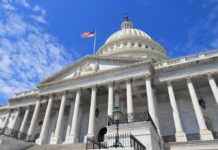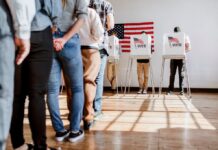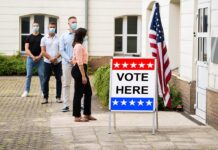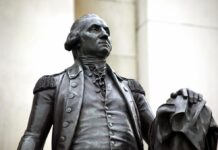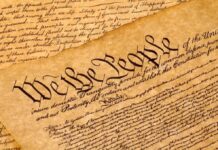
Voting rights in America have undergone extensive evolution and continue to do so. The latest change to them is on the table for 2020. Over the years, adjustments have been made based on everything from property ownership to race, gender, and age.
Article I Section 2
In 1776, there were very strict limits on who could vote, and they were based on religion, race, gender, and even property ownership. Article I Section 2 limited voters to those in each state who were able to vote for the “…most numerous Branch of the State Legislature.” In effect, this limited voting rights to white Christian (mostly Protestant) men, aged 21 and older, who owned property. Thus, a very limited number of people were allowed to vote in the first election.
The exception was New Jersey, whose Constitution granted the right to vote to anyone who had 50 pounds (the current monetary unit) and met the residency requirements. Single women may have been excluded in some areas where requirements were not verified because women still couldn’t own property at this time.
All White Men
Once the Revolutionary War was over, the states made their own voting laws to the extent that they could within the bounds of the Constitution. By 1856, North Carolina was the last state to drop property-holding requirements, making it so any white man could vote.
African American Vote
With the passage of the 14th Amendment in 1868, African Americans became citizens of the United States. They were still unable to vote, however, until the passage of the 15th Amendment in 1870. This amendment prevented bias based on “race, color or previous condition of servitude,” thus allowing those not just born free, but former slaves and indentured servants the right to vote.
Women’s Suffrage
By 1920, women gained the right to vote in every state because of the 19th Amendment. Up until then, some states had afforded women the right to vote, including Wyoming, where women were allowed partial suffrage in 1869. It wasn’t done as a whole across the entire area until 1890 when Wyoming officially became a state.
Native American Voting
Native Americans could not vote until passage of the Indian Citizenship Act in 1924. Previous to this act, American Indians could vote only if they renounced their tribal claims. This act granted them citizenship without infringing on any of their rights or entitlements as Native Americans, but some states still showed bias as late as 1957.
Asian American Voters
Provisions that had existed to prevent Asian Americans from becoming citizens and voting came to an end with the passage of the Immigration and Nationality Act of 1952, otherwise known as the McCarran-Walter Act. This act also made provisions for investment elements and visas. Even though Asian-Americans still saw discrimination when going to the polls, it was a step forward.
District of Columbia Limits
Citizens living in The District of Columbia cannot vote for Congressional representation. In 1961, the 23rd Amendment did give them the right to vote in the presidential election, however, offering them as many electoral votes as was appropriate for the District. In 2020, the District of Columbia petitioned for statehood to allow constituents to vote for Congressional representation, but the bid did not succeed.
Barriers Removed
Some barriers to voting rights remained in 1965 even though the US had come a long way. Education was one remaining barrier. Those who could not pass a literacy test were turned away at the polls. Many places in the US used this tactic knowing, in many cases, only affluent, white families received a quality education. Passage of the Voting Rights Act of 1965, allowed those who were not well educated or who spoke English as a second language to vote.
Fighting and Voting
“Old enough to fight, old enough to vote” became a national youth slogan when the draft age was lowered to 18 years of age. Finally, in 1971, after years of fighting for it and more than 60 proposals to amend the law, the 26th Amendment changed the voting age from 21 to 18.
In 2019, lawmakers introduced the For the People Act, which, among other things, proposed lowering the voting age to 16. It passed the House in March of 2019 but has yet to pass the Senate. Oddly, this comes at a time when the age restrictions for buying tobacco were raised from 18 to 21 in the United States.




